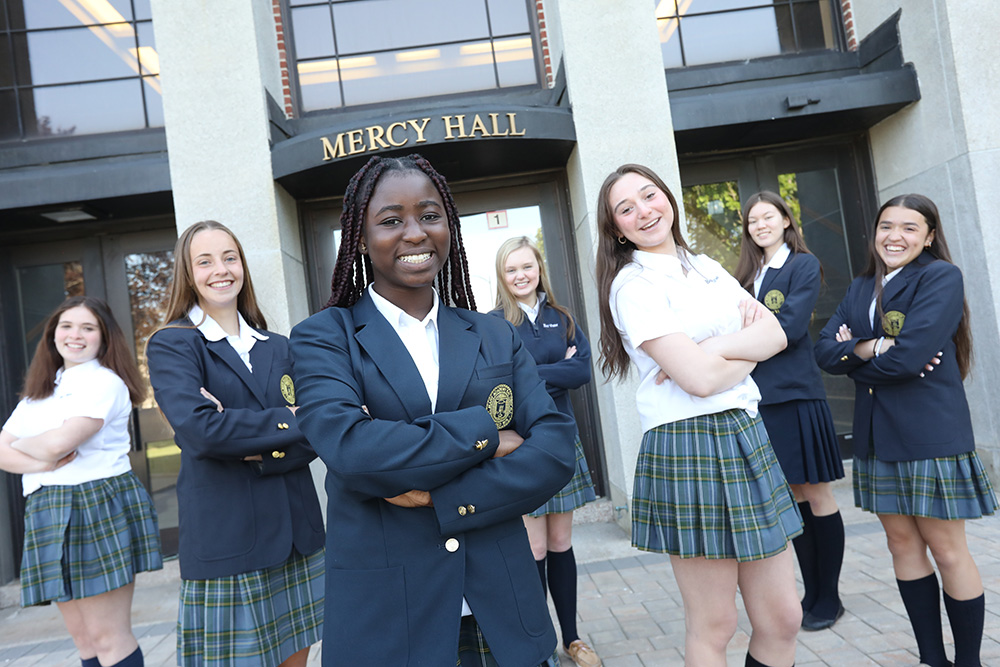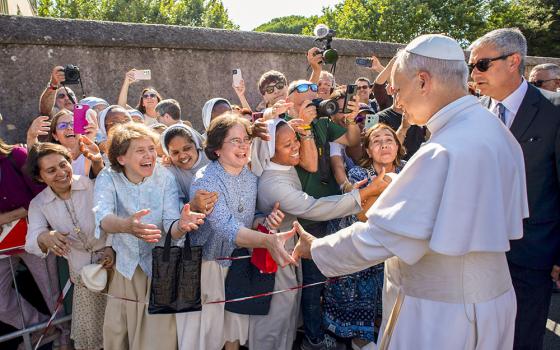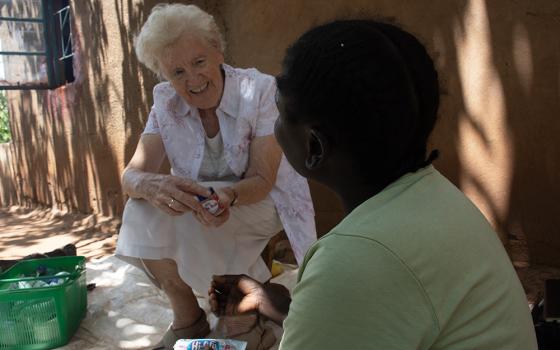
Students at St. Mary Academy - Bay View in East Providence, Rhode Island (Courtesy of St. Mary Academy - Bay View)
January's announcement of Our Lady of Mercy Academy's impending closure in Nassau County, New York, after more than 90 years, marked a profound loss in the story of all-girls Catholic education.
The school's message stated, "The decision to close the school was made with a heavy heart but guided by a commitment to responsible stewardship. I assure you that the decision was not made lightly. It came after thorough consideration of the challenges facing many education institutions today: changing demographics and lower enrollment, which radically affected our viability."
My heart goes out to the alumnae, the sisters, the faculty and all affected by this heartbreaking decision. It's a stark reminder of the critical need for philanthropy to uphold the invaluable missions of all-girl Catholic institutions, ensuring their foundational values of education and empowerment in the tradition of religious orders continue to inspire and impact future generations.
Our Lady of Mercy Academy's story, unfortunately, is not unique. It reminded me of the fate of Mother Cabrini High School, my mother's alma mater, which closed in 2014 after 115 years. Mother Cabrini was an epicenter of young immigrant women's education and empowerment in Washington Heights, New York.
The palpable grief of the school president, who wept alongside his students, mirrored the devastation felt by my mother and countless other alumnae. Their connection to the institution was deep, but by the time the closure was announced, it was tragically too late for their contributions to make a difference.
As the director of institutional advancement at Rhode Island's St. Mary Academy - Bay View, a Mercy-sponsored institution celebrating 150 years of educational excellence next fall, I am confronted daily with the challenges of maintaining the legacy of women's religious education in an ever-changing world. Once home to an all-women religious faculty, our school has felt the impact of time, with only two part-time sisters remaining and the adjacent convent long since closed.
The narrative of smaller enrollments is not isolated to our academy alone but is a widespread demographic shift facing Catholic all-girls schools nationwide.
This change is partly due to the economic barrier many potential students face. There exists a cohort of young women who aspire to attend these schools, whose dreams are curtailed by financial constraints. Increased tuition costs, a direct consequence of the evolving operational demands such as technological integration, infrastructure maintenance and competitive faculty salaries, further exacerbate this issue.
This situation underscores the urgent need for increased financial aid and scholarship opportunities to ensure that Catholic, all-girls education remains accessible to all.
Advertisement
In tandem, the decline of sisters in the United States is staggering, with fewer than 42,000 remaining, marking a 76% decrease over the past 50 years. This sharp decline underscores a critical juncture for institutions founded and inspired by these religious orders. It challenges us to preserve their charisms of educating and empowering girls, service, compassion, academic excellence and social justice.
The significance of backing all-girls Catholic schools is paramount. Yet, it's evident that these institutions only sometimes see the same level of financial support from their alumnae donors as men's schools do.
The Fidelity Charitable Women and Giving Report (2021) sheds light on a notable disparity in financial literacy and philanthropic engagement among women, even though they strongly desire to contribute to social change. While many women are eager to amplify their philanthropic footprint, a gap exists in their awareness and utilization of assets for charitable purposes.
By enhancing awareness and education on the impactful role of women's giving, we can better support and enrich these critical educational communities, acknowledging that tuition alone is insufficient for their needs. There's a compelling need to bridge this gap, fostering an environment where the generous spirit of alumnae donors and friends can flourish and contribute significantly to the sustenance and advancement of all-girls Catholic schools.
Following the announcement of Our Lady of Mercy's impending closure, more than 8,000 alumnae and supporters came together in a heartfelt petition to reconsider the decision. This remarkable display of solidarity underscores the deep connection and affection many hold for the institution. It also highlights a moment of reflection on the various ways support can be shown, including financial contributions.
Now, on March 8, International Women's Day, with its 2024 theme, "Invest in women: Accelerate progress," we are reminded of the transformative power of investing in women's education.
The International Coalition of Girls Schools provides compelling evidence of the impact of girls' school graduates, highlighting their increased engagement in community and environmental programs, civic duty, and leadership. Graduates of all-girls schools are not only prepared to vote and stay informed on political affairs, but they are also more likely to become bold leaders who value cultural competency and strive to bridge racial and cultural divides.
Investing in all-girls schools, particularly those founded by women religious orders, is an investment in the future. It ensures that the values of mercy, compassion and social justice continue to inspire and guide future generations of girls. It is a commitment to empowering young women to become agents of change, equipped with the confidence and skills to lead with integrity and compassion. And as religious orders decline, it's the ultimate investment that their charisms continue to live on.





